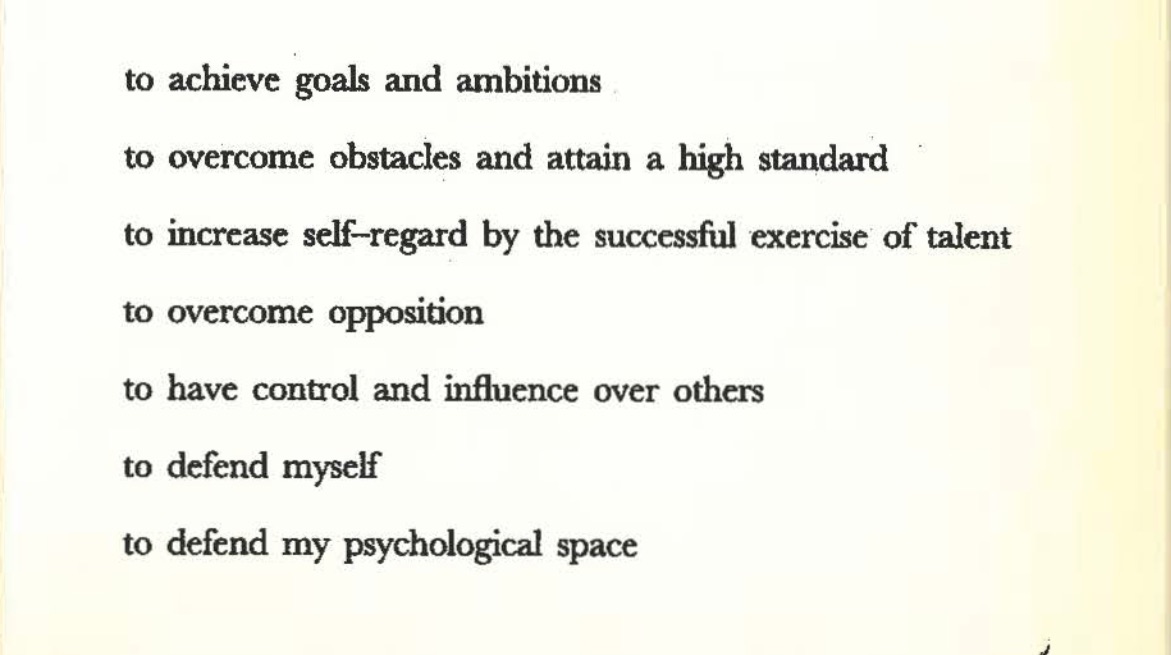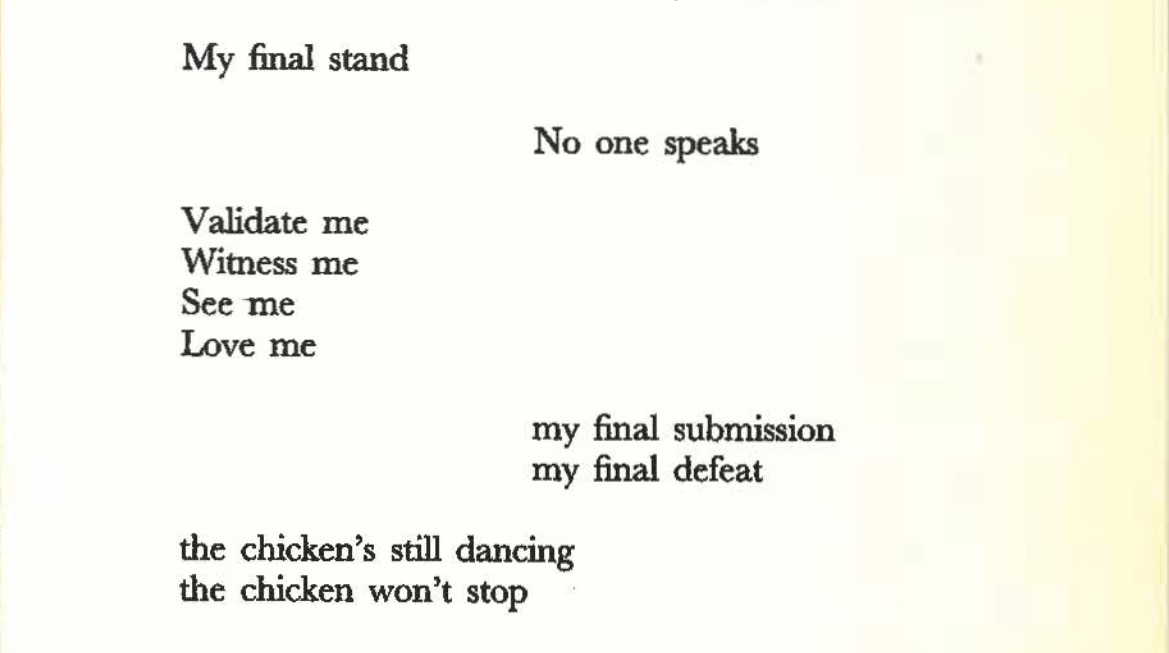2. Adapting Sarah Kane’s ‘4.48 Psychosis’
The British playwright Sarah Kane (1971–1999) finished the manuscript for 4.48 Psychosis (Methuen, 2000) just a few days before she tragically took her own life. For this reason, 4.48 Psychosis is in part seen as Kane’s discussion and public ‘outing’ of her own suffering under depression and her contemplation of suicide. In it, she writes about depression, the search for love, happiness and the search for it, mortality, her relationship with her writing and his/her gender identity – themes explored more obliquely in other earlier works, but in 4.48 Psychosis given a searingly direct and personal edge. The text ends, profoundly and prophetically, with the main character taking his/her own life.
However, 4.48 Psychosis is so much more than autobiography. It is renowned for its openness and flexibility of form and its wide variety of text registers and styles. It has no stipulation of personnel on stage, their gender(s), how many performers there should be, their age(s), or, if there is more than one, their relationships between each other. There are no stage directions apart from occasional instruction for silence. No setting or timeframe is given or implied. For most of the play, text is not ascribed to particular individuals; only some passages indicate a dialogue between a patient and a doctor/psychotherapist, using dashes in the margins. Most of the text is in the first person, but it is also highly polyphonic, using at least seven different levels of indentation and various spacings on the page to indicate a multitude of ‘voices’ or points of view. However, Kane does not indicate if or how this polyphony should be achieved on stage.
The text is divided into 24 short scenes, each separated by a line of five dashes on the page. The registers of text vary widely from scene to scene, from dense, highly poetic monologues (scenes 18, 21), awash with reference and metaphor, to more colloquial dialogues (scenes 1, 6, 10, 12, 23), to abstract lists of numbers (scenes 4, 20) or words (scenes 13, 19), to lists of drugs and their symptoms (scene 14), to lists of negative (scene 3) and positive statements (scene 22), to fragmented, polyphonic verse (scenes 11, 24), to stream-of-consciousness memories (scene 5). There is both personified and non-personified text, with a range of possible points-of-view.
The narrative behind the text is only lightly implied and is open to wide interpretation. In its formal structure, it operates on multiple implied timelines and locations, suggesting both real-time events in the present tense, memories in the past tense, and combinations thereof. There is little implication in the text that scenes follow each other chronologically; they are tableaux that examine themes of love, death and sadness from different angles, at different times, mixing the inner, reflective world with the outer world of medical treatments. Kane plays with the ambiguity between historical narratives, memories and fantasy; we do not know what is external reality and what is internal imagination.
The overall structure of 4.48 Psychosis is patchwork, episodic and formalized. Some tableaux return periodically, some are grouped around thematic content, and from the patchwork emerges a structural arc, leading towards the final scene, suicide. Most importantly, because the prose is free, the structure non-linear and without fixed characterisation, Kane’s text offers a rare thing for theatre-makers: a dramaturgy that does not depend on who says what. As director Ted Huffman said “Sarah Kane’s text has a lot of room in it. She leaves room for the director. It’s almost a challenge she lays down, she says ‘here is this text, what will you do with it?‘” (in an interview with Samira Ahmed on Front Row, BBC Radio 4, 24th May 2016).
Listen to the interview here:
Figures 6 to 11 show images from the published edition to illustrate the wide range of text registers.
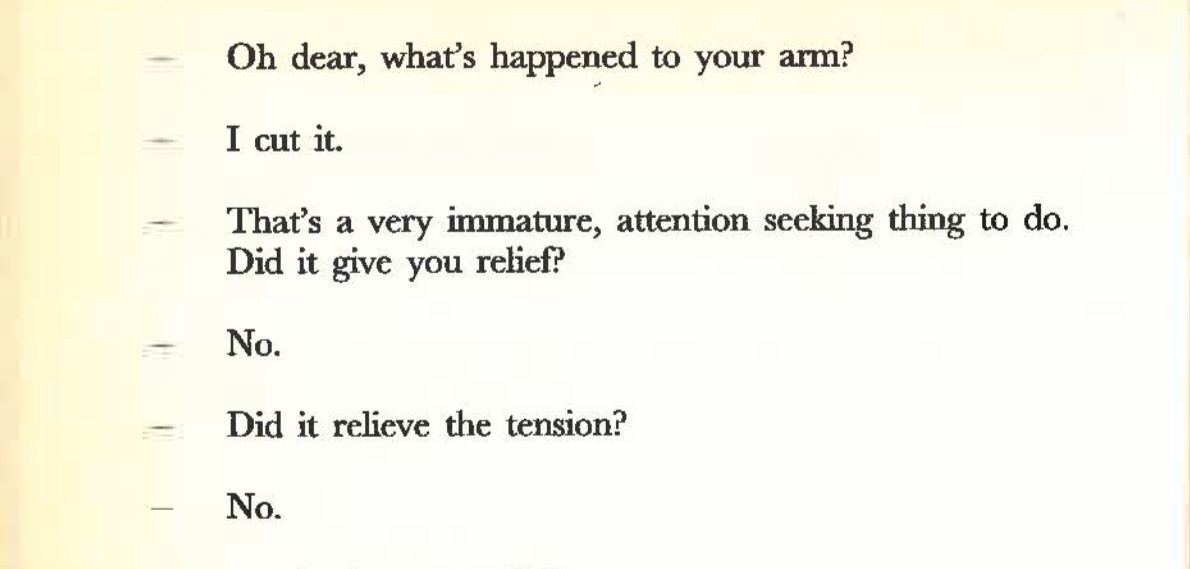
Figure 7: An excerpt from Scene 10 from 4.48 Psychosis showing a dialogue between patient and doctor/therapist.
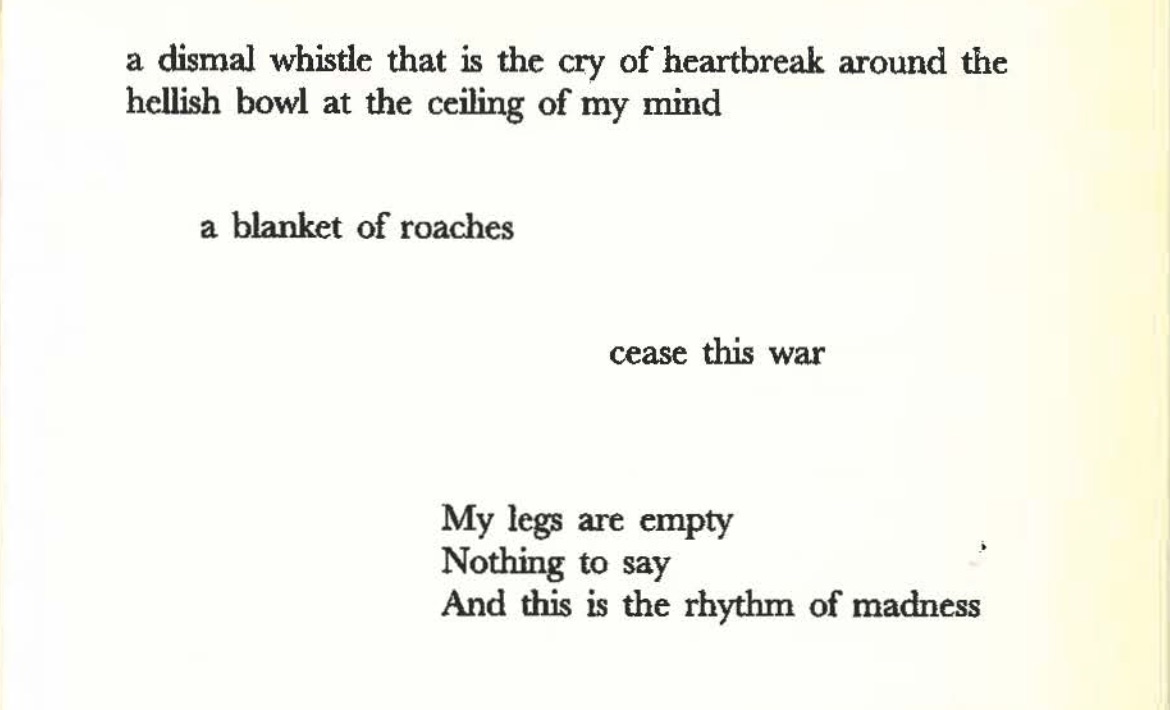
Figure 8: An excerpt from Scene 15 from 4.48 Psychosis showing free verse with varied indentation and spacing.

Figure 9: An excerpt from Scene 19 from 4.48 Psychosis showing song-form verse , akin to a nursery rhyme.
The wide range of registers, openness and interpretability of Kane’s text makes it ideal source material with which to address the research objectives discussed in the previous chapter. Since the three-way relationship between text, voice and narrative is not prescribed by Kane’s text, as it may be in a traditional stage-play or libretto, the composer is forced to make several fundamental choices: about dramaturgy; about how text is presented when no narrative point of view is indicated (e.g. Figure 6); and about how to distinguish inner monologue (Figures 8 and 11) from narrative realism (Figure 7). Of course, these issues present themselves to composers in many libretti, but the crucial and unusual point in this case is that none of this text is explicitly tied to characters, allowing the composer much more scope to play with disembodied voices, polyphonic inner monologues, visually presented text, abstractions, and a myriad of other devices, without the constraints of the ‘who says what’ relationship between performer and text.
Given these opportunities afforded to the composer by Kane’s text, it must be acknowledged that the same opportunities would be afforded any composer-writer collaboration making a new text from scratch. In fact, the first year of this doctoral residency was spent trying to establish such a collaboration, with the intention of making an original opera rather than an adaptation. This hit various practical obstacles at the same time that discussions with Simon Kane indicated that rights for 4.48 Psychosis would be forthcoming. Given this unique opportunity to make the first ever adaptation of Kane’s work and the scope to explore all of the music-text relationships outlined above, the search for a writer collaboration was abandoned in favour of making an operatic adaptation of 4.48 Psychosis.
The rights agreement with the Kane estate obliged the operatic adaptation to ‘maintain the integrity and spirit of the text‘. Upon discussion with Simon Kane, in practice this meant that no significant cutting or reordering of Kane’s text was allowed, nor the addition of any new text, but cutting individual lines here and there was permissible with the plea that nothing was cut simply because it was not understood. Given that there was no writer with whom to collaborate and no opportunity to significantly edit the source text, the dramaturgical challenges and opportunities discussed above could only be addressed through musical and dramaturgical solutions. The source text was unyielding.
This combination of freedom and constraint encourages – or forces – the composer to make dramaturgical choices about how text is used; choices which, for a composer adapting a more more traditional character-narrative libretto, are likely to have already been made by the librettist. (Clearly, composers working in collaborations with librettists on original stories have this freedom too, but the point is made about making adaptations of existing dramatic texts.) The role of composer as Auteur or Dramaturg was highlighted in a conference presentation about this operatic adaptation of 4.48 Psychosis by Dr. Gareth Llŷr Evans:
Significant choices regarding how the text was interpreted, utilised, and how it functioned and was incorporated within the mise en scène were all primarily the purview of the composer.
I would argue the process of composing 4.48 Psychosis as an opera was not one of merely setting a libretto to music. The nature of the text itself and the stipulations regarding its use for this specific production, and also the absence of its author, meant that the compositional process was primarily concerned with the creation of a musical dramaturgy, rather than musical adaptation. […]
Therefore it was the composer that decided what parts of the text were to be musicalized; which were to be sung and how, which were spoken, or which to be projected. As a result of the various ways in which text was utilised, the resulting dramaturgy could be considered as one that was stratified with the text woven between instrumentalists, singers, and the scenography.
(An excerpt from Evans, G. L., 2016, The Composer as Auteur: Sarah Kane’s 4.48 Psychosis as an Opera (Unpublished). Conference paper given June 16th 2016 at the the Music Theatre Working Group, International Federation of Theatre Research Conference: ‘Presenting the Theatrical Past‘, Stockholm University, Sweden. The complete conference paper can be found here: The Composter as Auteur – 4.48 Psychosis as Opera.)
For further reading about the role of spoken text in this opera, and more background about the Kane text in the context of this opera, see two introductory essays written by John Fallas and Cristina Delgado-Garcia, written for the programme book of the performances of this opera. The programme book can be found here.
2.1 General Concept and Team
In order to orient the reader in the coming discussions, the table in Figure 12, and the more extensive version here, shows the structure of Kane’s text in 24 scenes, with notes about musical treatment, singers, pre-recorded material, instrumental ensemble and projection. On the whole, the musical treatment followed Kane’s structure: when a particular text treatment returns, for example the ‘serial sevens’ number patterns (scenes 4 and 20) or the doctor-patient dialogues (scenes 1, 6, 10, 12, 23), the recapitulations were given the same musical treatment. Kane’s patchwork structure was mapped into a dramaturgical-musical patchwork, shown by the colour-coding on the table.
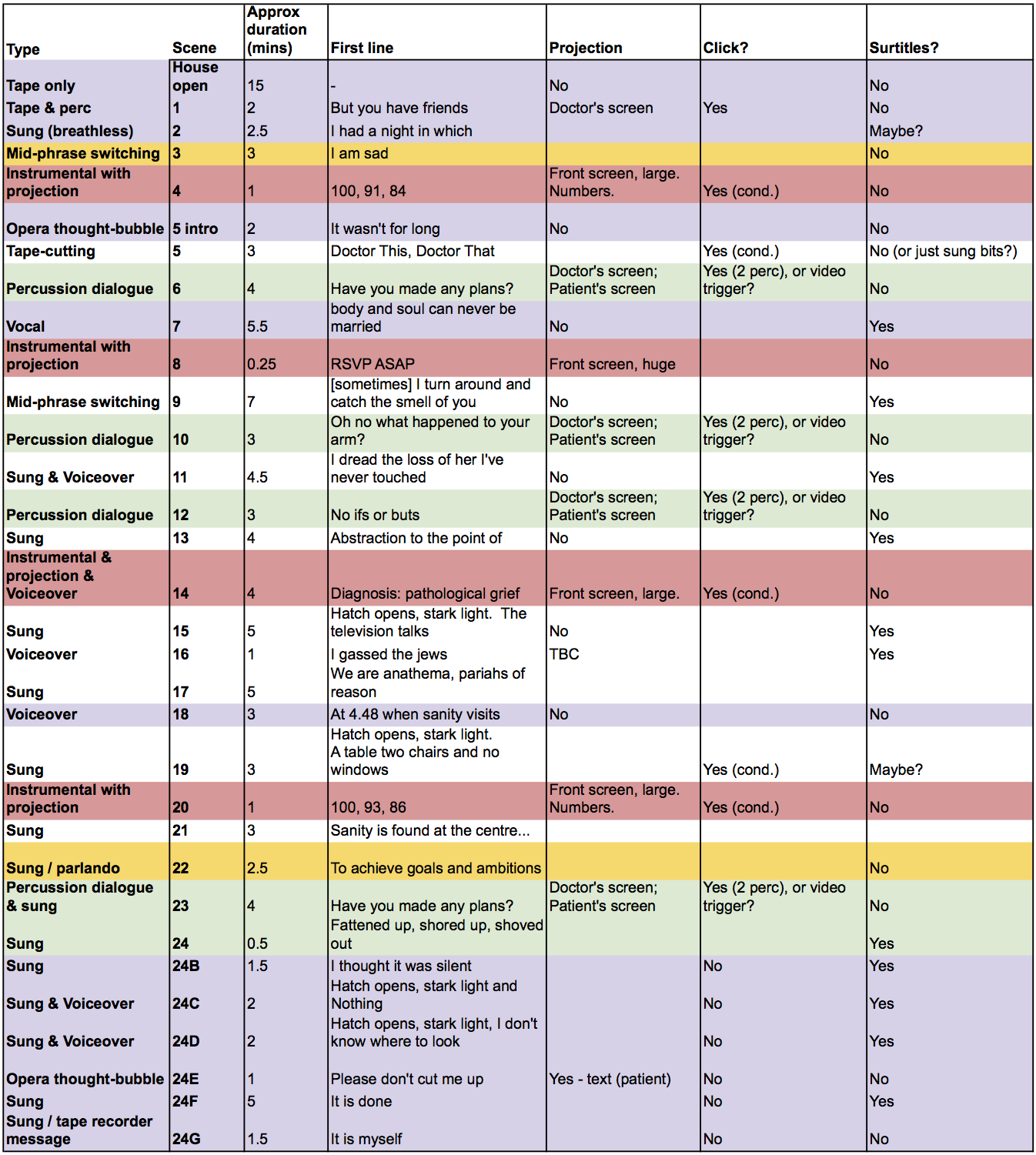
Figure 12: a scene plan of 4.48 Psychosis showing treatment, duration, projection, surtitles and clicks.
Given the discussion above about the freedom from ‘who says what’ characterisation in 4.48 Psychosis, our general casting concept was to create a ‘hive mind’ of similar voices. Using an ensemble of voices in this way enabled flexibility in terms of who sings what. No single cast member would take on a truly fixed role, with the exception, perhaps, of one person carrying some of the solo arias on behalf of the main character (the patient). The whole ensemble would at times represent the main character, at other times they would step out to play the roles of doctors, lovers, carers. The polyphonic inner voices could be mapped into real vocal polyphony, solo arias or speeches could be distributed between the cast, some parts could be left open in the score and allocated in the rehearsal room, leaving the director more flexibility with staging. And, with this fluidity of character representation, the dream-like state between reality, memory and prophecy could be better explored.
Six female singers were chosen, three sopranos and three mezzo-sopranos. They were all auditioned with spoken text excerpts as well as song, and therefore the cast were chosen with both skills in mind. They became our ‘hive-mind’, led by Gweneth Ann Rand who became the ‘lead’ of the group, carrying more of the solo arias, including in the final scene. In the absence of a character name, this commentary refers to the roles according to the first names of the cast, and these will be retained as a tribute to them in the published score: Gwen, Jen, Suzy, Clare, Emily, Lucy.
Here is the relevant personnel list. For a complete production personnel list, see here.
Gwen (soprano) – Gweneth Ann Rand
Jen (soprano) – Jennifer Davies
Suzy (soprano) – Susanna Hurrell
Clare (mezzo-soprano) – Clare Presland
Emily (mezzo-soprano) – Emily Edmonds
Lucy (mezzo-soprano) – Lucy Schaufer
Director – Ted Huffman
Conductor – Richard Baker
(the composer, director and conductor are often referred to as the Creative Team in this commentary)
Chroma Ensemble, 12 players:
Alto Flute+Piccolo;
3 soprano saxophones in B flat, all doubling baritone saxophone in E flat;
Accordion;
Piano+Synthesizer with MIDI organ pedal board;
2 Percussion (solo roles);
Violin+Viola;
2 Viola;
Contrabass (with C extension).
Sound: Sound Intermedia
Amplification on all voices and instruments.
Pre-recorded sound.

